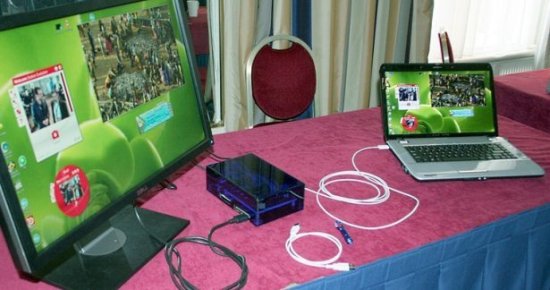Intel let folks get hands-on with its speedy Light Peak technology this week at its European research show in Brussels. The interface has been showcased at several public events since being teased last September, but this marks the first time the company has let people actually experience it up close and personal, according to PC Pro.
Light Peak was reportedly placed inside a standard USB cable, with optical fibers running parallel to the electrical wiring. Intel demonstrated how data traveled through the cable by shining light into one end, which resulted in two little dots of light visible to the naked eye appearing at the other end.

Light Peak was shown in action with a laptop feeding two separate, lag-free HD video streams to a TV. The laptop housed a 12mm square chip tasked with converting optical signals into data the machine can understand. That wasn't implemented in the TV, though, which required an external box for conversion.
Intel said its optical technology provides seemingly limitless bandwidth. "Light Peak begins at 10Gbits/sec, simultaneously in both directions," said CTO Justin Rattner. "You'll see multiple displays being served by a single Light Peak connection. There's almost no limit to the bandwidth -- fibers can carry trillions of bits per second."
https://www.techspot.com/news/38840-intel-shows-light-peak-streaming-two-hd-videos-at-once.html